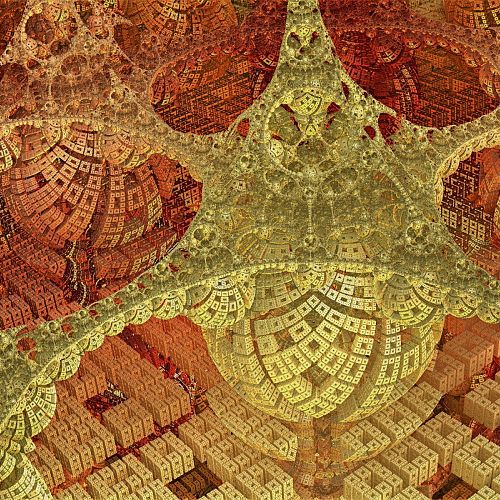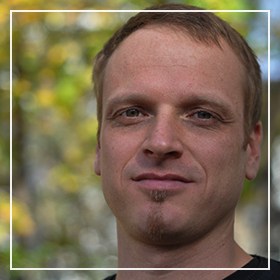There are numerous approaches to defining “Global Health” (Brown, Cueto, and Fee 2006; Farmer et al. 2013; Fassin 2012; Janes and Corbett 2009), a phenomenon that Arthur Kleinman (2010: 1518) considered to be “more a bunch of problems than a discipline.” Nevertheless, a common thread in different conceptions of the field suggests that it is constituted by – and has emerged as a reaction to – an increasingly multi-layered connectivity of all parts of the world and the pervasive global and/or transnational mobility of people, pathogens, medicines, technologies, institutional arrangements, finances, ideologies, knowledge, and moralities (cf. Koplan et al. 2009). The varying connections and flows engendered by processes of globalization shape not only the health of entire populations and produce novel medical conditions that engender a sense of global urgency. They also mold the ways in which technologies, discourses, infrastructure, health conditions, people, and resources converge into specific medical “assemblages” (Collier and Ong 2008) or “medicoscapes” (Hörbst and Wolf 2014), which are configured on a local, global, or transnational scale.
Anthropologists and other social scientists have begun to expose how profoundly the im/mobilities and dis/connectivities constituting the landscape of Global Health are shaped by transnational power relations, as well as by the agendas and interests of particular actors (Brada 2011; Crane 2013; Kenworthy 2014; Okwaro and Geissler 2015), which often manifest in patterns of highly fragmented “networks of enclaves” (Geissler 2015: 14) of professional expertise, abundant financial resources, and well-functioning infrastructure (Sullivan 2011). Inspired by these works,
this thematic thread explores how various instances of Global Health are coming into being – not in the sense of a political, institutional, or disciplinary category, but rather as a highly inclusive reference for diverse processes of medical globalization in an increasingly interconnected world (Dilger and Hadolt 2015).
In recent years, medical anthropologists have provided ample evidence that processes of medical globalization are shaped by the manifold mobilities of human and non-human actors. In doing so, they have pointed out that even though movement can be a “disruptive social experience,” it most notably constitutes the ground for dynamics of connectivity and multidirectional linkages in transnational settings that may be highly unexpected but nonetheless productive (Langwick, Dilger, and Kane 2012: 9). Taking this insight into account, we concur with de Bruijn and van Dijk (2012: 4), who understand connectivity as the “process of linking and making new connections,” which leads to the formation of “new social constellations” as well as the transformation of existing ones. It is therefore crucial to explore the nature of and preconditions for such connections and “the way people come to embrace” them (ibid., our emphasis), in order to better understand the quality and effects of the novel social formations they engender. In this thematic thread, we attend closely to the role of mobility and connectivity in bringing about specific instances of medical globalization by asking how certain mobilities, flows, or connections come into existence, but also how they are blocked and do not occur under specific social, cultural, politico-legal, and economic conditions, resulting in equally distinct medical assemblages.
That is to say, we assume that both the presence as well as the absence of certain mobilities and connectivities constitute productive forces in medical globalization and that they both decisively contribute to the fact that medical technological and infrastructural landscapes come into being in often highly fragmented, unequal, and partially elusive ways.
This thematic thread was curated by the collaborative blog Medizinethnologie: Body, Health and Healing in an Interconnected World, which was established by the working group Medical Anthropology within the German Anthropological Association in 2014, and has since published pieces on a wide range of topics related to the field of medical globalization. Throughout the coming week, the authors will present different angles of how the dynamics of im/mobility and dis/connectivity shape configurations of medicine, health, technology, and infrastructure in their respective field sites, both with regard to local processes and their global and/or transnational entanglements.
The thematic week is opened by the contribution of Anika König, who explores how the technology of gestational surrogacy has given rise to transnational networks of reproductive travel that are channeled by, and simultaneously trigger changes in, national ethical and legal frameworks and the corresponding opening up and closing down of commercial opportunities and specific “reproductive hubs.” Furthermore, these networks of reproductive mobility – which connect bodies, gametes, and financial resources across countries like Germany, Switzerland, India, the USA, and the Ukraine – are sustained by a growing landscape of online communication in which the desires and dependencies of both intended parents and surrogate mothers are exposed and negotiated.
Claire Beaudevin focuses on the way in which medical genetics has become an object of public health services in Oman. She shows that the growing attention of the state to hereditary disorders is linked not only to the recent availability of diagnostic technologies and the World Health Organization’s growing prioritization of the prevention of congenital diseases in primary healthcare, but also to the Sultanate’s ability to afford to care for the rare genetic conditions of its citizens due to its long-term (though currently regressing) revenues from oil rent. In this context, the establishment of two public genetic medicine centers over the last couple of years has given rise to a dense web of health experts, technological infrastructure, and patients who produce, appropriate, and circulate knowledge about rare genetic disorders and “Arabian DNA”, both locally and beyond the national borders of Oman.
In the third contribution, Bo Kyeong Seo explores the socio-material infrastructure of Renal Replacement Therapy in Thailand, a medical technology that, according to the country’s universal health coverage scheme, should be freely provided to all citizens in need. Drawing on the example of a particular patient’s struggle to receive peritoneal dialysis treatment in a district hospital in Chian Mai, Kyeong Seo demonstrates that the successful provision of care is not only contingent on the connectivity between patients and health institutions at several structural layers of the Thai health care system. It can also only be realized if productive connections are established between political rationalities, administrative techniques, material distributions, and human resources. Care itself becomes an act of effectively ‘suturing’ such heterogeneous elements together.
In the final contribution of the thematic thread, René Umlauf draws attention to the implications of the use of two technologies for the prevention of malaria in Northern Uganda. He explores the differences in how human behavior, malaria vectors, ecological environments, and political discourse are (dis)connected in the context of residual indoor spraying of chemicals as compared to the increasing propagation of insecticide-treated bed nets. In so doing, Umlauf argues that health planners deliberately conceal the causal relationship between indoor spraying and the diminished malarial immunity of those who have been subject to such costly interventions over the course of many years. The resulting risk of people’s lack of understanding and acceptance of bed nets as an “option with no choice,” given the intended cessation of indoor spraying programs, presumably leads to the increasing occurrence of ever more severe malaria epidemics.
As the contributions of this thematic week show, an analytic focus on the specific conditions, effects, and strategic implications of the im/mobilities of and dis/connectivities between the numerous elements constituting medical assemblages can be helpful in illuminating the particular power dynamics involved in their coming into being. In this way, the pieces expand our perspectives on the patternedness of flows and blockages in medical globalization and help us to understand the ways in which highly diversified – and partially non-occurring – modes of mobility and connectivity constitute bodies, health, care, and healing in an interconnected world.
Co-published by Allegra Lab and the Collaborative Blog Medizinethnologie: Body, Health and Healing in an Interconnected World
References
Brada, Betsey. 2011. “Not here“: Making the spaces and subjects of “Global Health” in Botswana. In: Culture, Medicine & Psychiatry 35 (2), 285-312.
Brown, Theodore, Marcos Cueto & Elizabeth Fee. 2006. The World Health Organization and the transition from “International” to “Global” Public Health. In: American Journal of Public Health 96 (1), 62-72.
Collier, Stephen J. & Aiwha Ong. 2008. Global Assemblages Anthropological Problems. In: Ong, A. & S. J. Collier (eds). Global Assemblages: Technology, Politics, and Ethics as Anthropological Problems. Blackwell Publishing Ltd, Oxford, UK, 3-21. doi: 10.1002/9780470696569.ch1.
Crane, Johanna. 2013. Scrambling for Africa: AIDS, Expertise, and the Rise of American Global Health Science. Ithaca: Cornell University Press.
De Bruijn, Mirjam & Rijk van Dijk. 2012. Introduction: Connectivity and the Postglobal Moment: (Dis)connections and Social Change in Africa. In: de Bruijn, Mirjam & Rijk van Dijk (eds). The Social Life of Connectivity in Africa. New York: Palgrave MacMillan, 1-20.
Dilger, Hansjörg & Bernhard Hadolt. 2015. Medicine in Context. Towards a Social and Cultural Anthropology of Medicine(s) in an Interconnected World. In: Medicine, Anthropology, Theory 2 (3), 128-153.
Farmer, Paul, Jim Yong Kim, Arthur Kleinman & Matthew Basilico. 2013. Introduction. A biosocial approach to Global Health. In: Farmer, Paul, Jim Yong Kim, Arthur Kleinman & Matthew Basilico, eds. Reimagining Global Health. An Introduction. Berkeley: University of California Press, 1–14.
Fassin, Didier. 2012. That obscure object of Global Health. In: Inhorn, Marcia & Emily Wentzell, eds. Medical Anthropology at the Intersections. Histories, Activism, and Futures. Durham, NC: Duke University Press, 95–115.
Geissler, P. Wenzel. 2015. Introduction. A life science in its African para-State. In: Para-States and Medical Science. Making African Global Health. Durham, NC: Duke University Press, 1–44.
Hörbst, Viola & Angelika Wolf. 2014. ARVs and ARTs: Medicoscapes and the Unequal Place-making for Biomedical Treatments in sub-Saharan Africa. In: Medical Anthropology Quarterly 28 (2), 182-202.
Janes, Craig & Kitty Corbett. 2009. Anthropology and Global Health. In: Annual Review of Anthropology 38 (1), 167–183.
Kenworthy, Nora. 2014. Global Health: The debts of gratitude. In: Women’s Studies Quarterly 42(1), 69–85.
Kleinman, Arthur. 2010. Four social theories for Global Health. In: The Lancet 375 (9725), 1518–1519.
Koplan, Jeffrey, T. Christopher Bond, Michael Merson, et al. 2009. Towards a common definition of Global Health. In: The Lancet 373 (9679), 1993–1995.
Langwick, Stacey, Hansjörg Dilger & Abdoulaye Kane. 2012. Introduction: Transnational Medicine, Mobile Experts. In: Dilger, Hansjörg, Abdoulaye Kane & Stacey Langwick, eds. Medicine, Mobility, and Power in Global Africa. Bloomington: Indiana University Press, 1-27.
Okwaro, Ferdinand and P. Wenzel Geissler. 2015. In/dependent collaborations: Perceptions and experiences of African scientists in transnational HIV research. In: Medical Anthropology Quarterly 29 (4), 492-511.
Sullivan, Noelle. 2011. Mediating abundance and scarcity: Implementing an HIV/AIDS-targeted project within a government hospital in Tanzania. In: Medical Anthropology 30 (2), 202–21.






